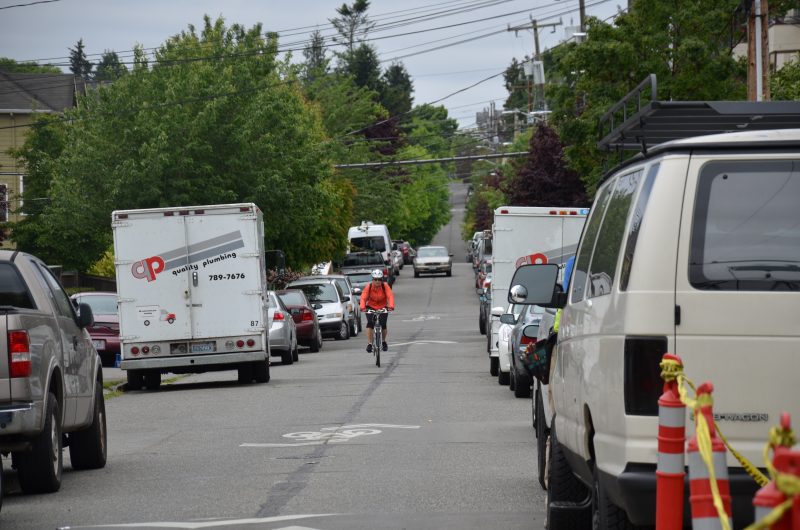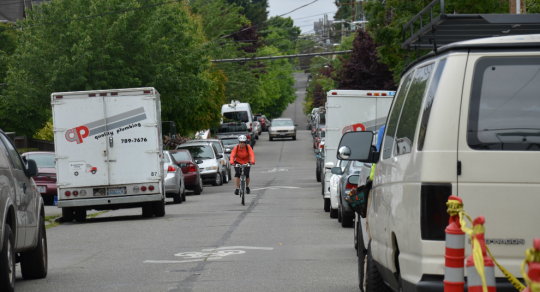I’m in Seattle today joining the second leg of a study tour for a group from Indianapolis that’s visiting Portland and Seattle to study neighborhood greenways, the relatively low-cost, low-controversy bike infrastructure Portland imported from Vancouver BC and has built into a pretty solid network on its eastside grid.
As we’ve reported, our neighbors to the north are following suit even as funding for further expansion of Portland’s system remains frozen.
Indianapolis, short on cash but ambitious about bike infrastructure, is one of several cities around the country who are also following Portland’s lead.
Portland’s active transportation planners are trying to put the pieces in place for further greenway investment in the coming years, funding (but not yet releasing) an in-house, data-rich study of how the system is working. Meanwhile, neighborhood advocates have been using many tactics to raise awareness of a problem on some of the streets: heavy car traffic, in some cases from people who are cutting through the neighborhood on their way to somewhere else and seem distressed by the idea of getting stuck behind a 10 mph bicycle.
Advertisement
Here in Seattle, the Indianapolis squad noticed something interesting: Seattle’s residential streets tend to be much narrower than Portland’s, especially huge expanses like those of Northeast Going, Northeast Alameda or (to a lesser extent) Southeast Clinton.
Add parking on each side and on some Seattle streets, like 58th Street in the Ballard neighborhood pictured above, you’ve got a single lane to carry traffic in both directions.
Say what you will for this setup — it definitely calms traffic. Bike traffic included.
After I took the photo above (and after she negotiated a face-to-face standoff with a car coming the opposite direction in which both driver and rider stopped and waved the other one to proceed), I jogged beside the woman biking for a moment and asked if conflicts like that were annoying, or whether it was worth it because of the slow speeds.
She seemed noncommittal.
“Part of living in a city, I guess,” she said.



